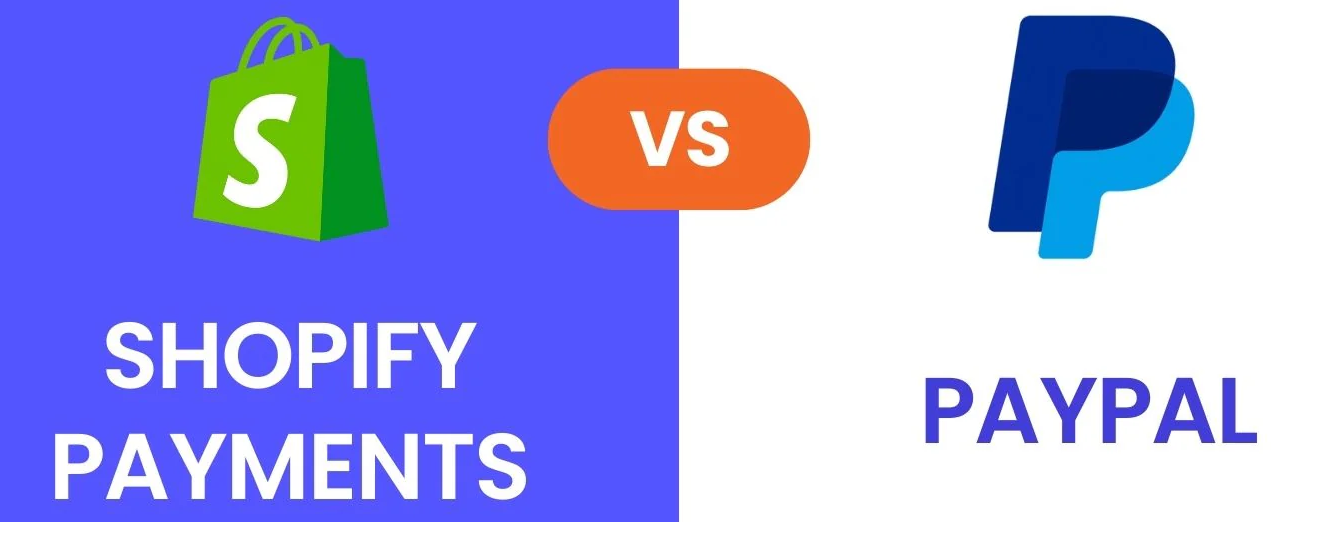When it comes to running an online store, one of the most critical decisions you’ll need to make is choosing the right payment processor. Two of the most popular options for Shopify store owners are Shopify Payments and PayPal. While both are excellent choices, they come with their own pros and cons, which can affect your store’s overall performance, fees, and user experience. In this article, we’ll compare Shopify Payments and PayPal to help you determine which is the best payment processor for your e-commerce business.
1. Overview of Shopify Payments and PayPal
Shopify Payments is Shopify’s built-in payment solution, designed specifically for Shopify stores. It allows store owners to accept credit card payments directly through their Shopify store without needing third-party apps or integrations. Shopify Payments is powered by Stripe, and it’s fully integrated into the Shopify platform.
PayPal, on the other hand, is a widely used online payment platform that enables users to pay and transfer money securely online. With PayPal, customers can pay using their PayPal account or through credit and debit cards, even without a PayPal account, making it a versatile option for global transactions.
2. Transaction Fees: A Key Consideration
Shopify Payments:
- Transaction fees for Shopify Payments are relatively straightforward. Shopify takes a commission from each sale, but you can avoid the additional transaction fees by using Shopify Payments. The fee structure varies depending on your Shopify plan:
- Basic Shopify: 2.9% + 30¢ per transaction
- Shopify: 2.6% + 30¢ per transaction
- Advanced Shopify: 2.4% + 30¢ per transaction
Additionally, if you use Shopify Payments, you won’t be charged any additional fees for processing payments. However, if you choose to use a third-party payment processor like PayPal, Shopify charges an additional fee of 2.0% for the Basic plan, 1.0% for the Shopify plan, and 0.5% for the Advanced plan.
PayPal:
- PayPal’s fees are also based on the transaction amount and the customer’s location. Generally, PayPal charges:
- 2.9% + 30¢ for U.S. transactions
- International transactions incur higher fees (usually 4.4% + a fixed fee based on the currency)
Unlike Shopify Payments, PayPal’s fees are consistent regardless of your Shopify plan, so this can be a disadvantage for those on lower-tier Shopify plans who want to keep fees low.
3. Global Reach and Customer Preferences
Shopify Payments:
- Shopify Payments supports a range of payment methods, including major credit cards and debit cards. However, it is not available in all countries. As of now, Shopify Payments is available in over 17 countries, including the U.S., Canada, the UK, Australia, and parts of Europe. Shopify Payments also supports multiple currencies, which is great for global businesses.
PayPal:
- PayPal is one of the most widely recognized and used online payment systems worldwide. Available in over 200 markets and accepting 25 currencies, PayPal is a strong contender for global businesses. Additionally, many customers are more familiar with PayPal and trust it for online transactions. Offering PayPal as a payment option can help boost customer confidence, particularly in international markets.
4. Ease of Use and Integration
Shopify Payments:
- Shopify Payments is incredibly easy to set up because it’s fully integrated into the Shopify platform. You don’t need to worry about third-party apps or complicated integrations. Once you enable Shopify Payments, the payment system is ready to go, and you can start accepting payments almost immediately. The interface is user-friendly, and it’s designed to work seamlessly with the rest of your Shopify store.
PayPal:
- Integrating PayPal into your Shopify store is also relatively simple. Shopify has built-in integration with PayPal, so you can add it as a payment option in just a few steps. However, the setup process can involve additional steps depending on whether you’re using PayPal’s advanced features (like PayPal Pro or PayPal Express), and there might be extra steps for customizing the payment gateway.
5. Customer Experience and Checkout Process
Shopify Payments:
- Shopify Payments provides a smooth and seamless checkout process for your customers. Since it’s integrated directly into your Shopify store, customers stay on your website throughout the payment process, which can help build trust and reduce cart abandonment rates. The payment process is fast and easy, with minimal redirects.
PayPal:
- PayPal offers a secure, familiar, and fast checkout experience, especially for customers who already have a PayPal account. Customers who use PayPal can quickly check out by logging into their PayPal accounts and completing the purchase with just a few clicks. However, PayPal can cause some friction in the checkout process, as it redirects customers away from your website to complete the transaction, which can sometimes result in cart abandonment.
6. Security and Fraud Protection
Shopify Payments:
- Shopify Payments uses advanced security measures to protect both store owners and customers. It’s PCI DSS compliant, ensuring that sensitive payment information is securely processed. Additionally, Shopify Payments offers fraud analysis tools to help detect and prevent fraudulent transactions.
PayPal:
- PayPal is also known for its high security standards, including encryption and buyer protection. PayPal has a reputation for resolving disputes and offering protection to both buyers and sellers in the event of fraudulent transactions. However, some store owners find PayPal’s dispute resolution process to be more cumbersome compared to Shopify Payments.
7. Customer Support
Shopify Payments:
- Shopify offers 24/7 customer support through various channels like live chat, email, and phone. Shopify Payments users benefit from dedicated support tailored specifically to Shopify Payments-related issues.
PayPal:
- PayPal’s customer support is available via phone, email, and help center, but it has received mixed reviews regarding response times and quality of service. Additionally, PayPal’s account limitations and security holds can sometimes create issues for merchants, which can be frustrating to resolve.
8. Which Is Best for Your Store?
Choosing between Shopify Payments and PayPal ultimately depends on your business needs, goals, and target market. Here are some key takeaways:
- Use Shopify Payments if:
- You want a seamless, integrated payment solution with lower transaction fees (especially if you’re on a higher-tier Shopify plan).
- Your target audience is based in countries where Shopify Payments is available.
- You want to avoid additional transaction fees from third-party payment processors.
- Use PayPal if:
- You want to cater to international customers or markets where PayPal is a preferred payment method.
- You need a familiar, trusted payment option that customers are likely to use.
- You want the flexibility of offering multiple payment methods (PayPal, debit/credit cards, etc.).
Conclusion
Both Shopify Payments and PayPal are excellent payment processors, and each has its strengths. Shopify Payments is best for Shopify store owners looking for an integrated, streamlined payment solution with low fees and easy setup. PayPal, on the other hand, is ideal for businesses that need global reach, trust with customers, and flexibility in payment methods. Consider your target market, fees, and business needs to choose the payment processor that best fits your store.

